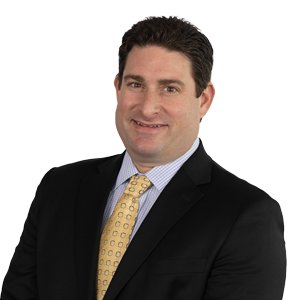Charity seeking to register product designs as trademark icon not met the “very high burden” for showing acquired distinctiveness
On September 1, 2023 the Trademark Trial and Appeal Board (TTAB) issued a nonprecedential Opinion affirming the Examining Attorney’s refusal to register a product design configuration for bed frames in In re Sleep in Heavenly Peace, Inc. In other words, the Trademark Office appeal board rejected an effort to register the bed frame design as a trademark icon, which would give the owner exclusive rights to the design among bed frame makers. The judge concluded that the bed has only “general features” that have not become associated only with the Applicant.
The Applicant, Sleep in Heavenly Peace, Inc., is a charitable organization that builds and provides beds to those in need. The Applicant sought registration on the Principal Register with a claim of acquired distinctiveness for bed frames such as the one shown below. According to the Applicant, the mark consisted of, among other things, a headboard and footboard each consisting of three rectangular horizontal bars with the middle rectangular bar larger in size and positioned closer to the bottom bar.

The Examining Attorney refused registration under Sections 1, 2, and 45 of the Trademark Act, 15 U.S.C. §§ 1051-1052, 1127 because, according to the Examining Attorney, the Applicant’s proposed mark consisted of a nondistinctive product design or nondistinctive features of a product design and the Applicant’s evidence of acquired distinctiveness was insufficient under Section 2(f). For example, the Applicant submitted that since starting as a small operation in January 2016, the Applicant has grown into a large nonprofit organization and delivered over 84,000 bed frames, including those comprising the proposed mark.
According to the Opinion, product designs may be registered as marks only upon a showing of acquired distinctiveness because consumers are not predisposed to equate such configurations with particular sources. Acquired distinctiveness requires a showing that the relevant public understands the primary significance of the matter as identifying the source of a product rather than the product itself and applicant bears the burden of proving at least a prima facie case of acquired distinctiveness. In addition, the Opinion notes the lesser the degree of inherent distinctiveness, the heavier the burden to prove that a mark has acquired distinctiveness.
The Examining Attorney argued that many third-party bed frames—such as those shown below—included rectangular headboards and footboards with horizontal and vertical bars. Some of those third-party bed frames were part of charitable service beds. In other words, the Applicant’s bed frame was not so unusual, unique, or unexpected that one could assume consumers would view the design as indicative of the source of the goods.

In view of the third-party evidence, the Opinion found that the Applicant had a “very high burden” in the appeal because the bed frames manufactured by others included many of the same general features the Applicant was claiming had become distinctive in the Applicant’s proposed mark. For example, the third-party evidence showed rectangular headboards and footboards consisting of three rectangular horizontal bars with vertical bars on each end connecting the horizontal bars. The Opinion also concluded that the relevant purchasers were the general public because the identification of goods did not otherwise restrict the class of consumer.
Based on this analysis, the Opinion found that the Applicant’s evidence (including, e.g., consumer declarations and social media posts) failed to demonstrate acquired distinctiveness. According to the Opinion, the evidence included images—such as those below—or documents showing the Applicant’s bed frame goods generally and including bed frames with designs different from the proposed mark. In other words, the Opinion found no indication that the Applicant’s evidence related to the promotion and recognition of the specific configuration embodied in the proposed mark and not to the bed frame goods in general.

The Applicant also adduced evidence of a third-party’s copying the Applicant’s bed frame design but the Opinion found the evidence did not demonstrate that the third-party intentionally copied the design to trade on the Applicant’s asserted distinctiveness as the source of the products. The Opinion noted that copying is only evidence of secondary meaning if the copier’s intent is to confuse consumers and pass off the copy as the source’s, and it is more common that competitors copy product designs for desirable qualities or features, such as ease and relatively low expense of building, transporting, and assembling a simple, twin-sized bed frame.
Ultimately, the Opinion held that the Applicant had not made an effort to direct consumer attention to any of the features that it believed were unique to its bed frames, including the bed frame for which the Applicant sought registration. Applicant had not met its “very high burden” to establish that its bed frame product design configuration had acquired distinctiveness as a source identifier. The opinion makes no mention of whether the Applicant sought design patent protection.





